#safiye sultan daughter of mustafa ii
Explore tagged Tumblr posts
Note
Excuse me, but I also think that Murad and Safiye did not have a daughter named Mihrimah.
The problem of your work as a historian is that you only pay attention to the writings of the ambassadors and ignore the documents of the harem.
In Mustafa Altun's book, (Yüzyıl Dönümünde Bir Valide Sultan: Safiye Sultan'ın Hayatı ve Eserleri) the rights of women in the sultan's court are specified in the final pages of the book. It is mentioned how much Sultan's sisters and cousins received. Even the names of the Sultan's four children, Mehmed, Mahmud, Ayşe and Fatma, are mentioned, but there is no name of another child.
It is more interesting that this information covers up to 1582. If Safiye had another child, most likely they would have died in infancy. If she was an older girl, her name would definitely be mentioned in the list of harem women. If Safiye had another daughter, Ahmad would have named her on one of his daughters, as he did with the others.
The previously mentioned ambassadors each say the opposite. One says that the Sultan has one daughter, while the other says that the Sultan has two daughters. It is clear that not all ambassadors could have correct information about the Sultan's family.
I think the problem of my work as a historian is that you guys ask about stuff that actual historians find in a lifetime while I have to answer in a couple of weeks. Also, I don’t have harem registers at hand and I cannot fly to Istanbul to look at them. In short, I’m doing my best with the sources I have on my pc.
I have my problems with those harem registers because while I appreciate them for showing us that Bayezid’s daughter Hatice went back to the harem at some point in her life (probably after a marriage), I don’t see Mihrimah (Süleyman and Hürrem’s daughter), who was alive in 1576:

In the top part there’s Murad III’s immediate family, so Safiye and his sons (Ayse and Fatma weren’t born yet). In the middle part we have expenses for clothes, but in the bottom part we have those who ate at the imperial kitchen and it seems strange to me that Mihrimah is not included. Also, where is Fatma binti Selim II? She was alive at the time.
Ironically, Fatma reappears after her supposed death (1580) in harem registers dated 1581-82. Either this is a mistake by the harem clerk or she didn't die in 1580 after all.

On the other hand Şah has disappeared because she truly died in 1580, it seems.
It it interesting that a historian like Uluçay missed these harem registers where Fatma is considered alive in 1581-82.
On the other hand, maybe these harem registers are not complete. Or they’re wrong.
In any case, a Mihrimah Sultan binti Murad III definitely existed, and maybe Mehmed Sureyya was wrong when he said that she was the eldest when Murad died. Or maybe we were wrong and she was the eldest when she died, therefore moving her date of birth forward.
EDIT: Fatma Sultan binti Selim II died on 24 June 1590, according to Seyyid Lokmân, Mustafa Selaniki, and İsmail Hâmi Danişmend (Lokmân and Selaniki were contemporaries). Mehmed Süreyya's Şaban 988 instead of Şaban 998 seems just an oversight. Thanks to @rhaenahanzades and @kehribar-sultan for pointing it out.
12 notes
·
View notes
Text

Handan was born in Bosnia around 1570. She was educated by Gevherhan Sultan, daughter of Sultan Selim II. She was giftet to prince Mehmed future Mehmed III. Handan gave birth to at least 4 childern. She was the mother of Ahmed I.Handan was the first female co-regent of the ottoman empire since her son Ahmed I ascended the throne as 13 years old teenage-boy. Ahmed didn't serve in province so he wasn't able to build alliances. In the first months of Ahmed's reign, Ahmed, Handan, grand vezir Ali Pasha and Ahmed's teacher Mustafa efendi met to discuss state affairs. The three men spoke face to face while Handan stayed behind the spanish wall. Few months later Handan steped back from politics and her salary was reduced. The whole thing is probably Handan's idea because she wanted Ahmed to be the opposite from his late father Mehmed III, who was overruled by his mother, Safiye Sultan. It is a known fact that Safiye was hated by soliders and even common people, so Handan suggested that Ahmed I sends her to the old palace. Handan had healthissues. In 1605 her situation worsened, especially after Ahmed executed one of her trusted men, Sinanpashaoglu Ahmed Pasha (son in law of Gevherhan Sultan who raised Handan)
On 9th November 1605, Valide Handan Sultan died, she is burried in Hagia Sofia, in Mehmed III's masoleum.
7 notes
·
View notes
Text
Sultanate of Women (3/7)
Afife Nurbanu Sultan (c.1525/ 7 December 1583)

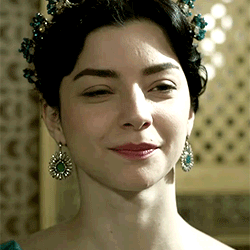
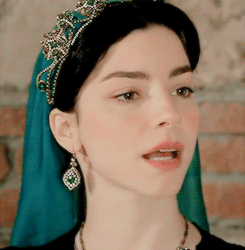
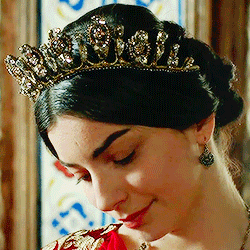
Daughter of Nicolo Venier and Violanta Baffo
Haseki Sultan (Legal Wife) of Sultan Selim II and Valide Sultan of Sultan Murad III
Mother of Sultan Murad III, Sah Sultan, Ismihan Sultan, Gevherhan Sultan, and Fatma Sultan
Grandmother of Sultan Mehmed III, Sehzade Mahmud, Sehzade Mustafa, Sehzade Oman, Sehzade Bayezid, Sehzade Selim, Sehzade Cihangir, Sehzade Abdullah, Sehzade Ahmed, Sehzade Yakub, Sehzade Alemsah, Sehzade Yusuf, Sehzade Hüseyin, Sehzade Korkud, Sehzade Ali, Sehzade Ishak, Sehzade Alaeddin, Sehzade Davud, Sehzade Suleiman, Sehzade Yahya, Hümasah Sultan, Ayse Sultan, Fatma Sultan, Mihrimah Sultan, Rukiye Sultan, Mihriban Sultan, and Fahriye Sultan.
Mother-in-law of Çakırcıbaşı Hasan Pasha, Zal Mahmud Pasha, Sokullu Mehmed Pasha, Kalaylıkoz Ali Pasha, Safiye Sultan, Piyale Pasha, Cerrah Mehmed Pasha, and Kanijeli Siyavuş Pasha
Fun Fact For Newbies: Nurbanu Sultan was born Cecilia Venier-Baffo
47 notes
·
View notes
Text
About the Haseki title
Yesterday was the anniversary of Hafsa Valide Sultan's death. For this reason, I would like to talk a little about the Haseki title as it was created due to her death.
Origin of the Haseki title
The title itself was created in 1534 by Suleyman I. The reason is more complicated than we would think at first. Usually, we believe that Suleyman created this title for Hürrem because he loved her so much that wanted to give her something valuable. But it's not only about his love and affection for Hürrem, the whole title had a deeper meaning.
Suleyman went a lot to war in his early-mid reign. During the wars, his mother was left in the capital to take care of his harem and act as a messenger for him. Hafsa was great for that role because Suleyman could trust her, she told him everything that happened, she was respected by everyone and she could take great care of Suleyman's family. So Suleyman could be calm, everything stayed fine in the capital while he was far away. Suleyman - and every sultan - needed a strong and honest and trustworthy ally in the capital during war-time, especially when war seemed to be long and hard. For example, his father Yavuz Selim I made Suleyman act as a regent while he was chasing his brothers and fighting against them. True that these times Suleyman was not in Topkapi Palace, Istanbul but Edirne, because that was the custom. So until 1534, Suleyman could leave the capital in relative calmness because the city was in the hands of his mother, and also his mother was there to keep safe the harem and take care of his children and family.
But everything changed in 1534, in the year of Suleyman's hardest campaign. Suleyman's Persian campaign started and these kinds of campaigns were the hardest and most dangerous campaigns for the Ottomans. The wars with the Safavids are legendary! In such a situation Suleyman's mother fell ill, very ill. This is why Suleyman didn't leave with his army in early 1534 but sent Ibrahim Pasha instead. This was the first time that he did not accompany his army. At first, the army was fine with it, at least there is no evidence suggesting otherwise. Most probably they knew the reason why the sultan stayed and understood him. But with time as the war became worse and worse, Suleyman was very needed at the battlefield. Hafsa Sultan in the end died on 19 March of 1534. After the mourning period, Suleyman should leave and join his army already. But who he could trust to keep the harem and the city safe? All of his trusted men were at the campaign and the only person he could trust, Hürrem, was not suitable for the position. In the end, Suleyman named his younger son, Mehmed as the protector of Istanbul, but he was young also. Mehmed moved to Topkapi Palace with his mother and tutor, but still, it was not enough. Hürrem was the only one Suleyman could completely trust, so he must have to make her suitable for the role.
But how could a simple consort rule the whole harem and help the young protector of Istanbul? Hürrem was the mother of a prince, which definitely was something but still, she was very far from the highest-ranking women of the harem. In the harem, there lived Suleyman's widowed sisters and aunts, who all had a higher rank than Hürrem. Most of them were even older than Hürem and age was a very important factor in the hierarchy especially together with ranks. How could Hürrem rule over them? How could Hürrem with a lower rank keep the harem in order? Well, there was no way for that, so Hürrem must have had a higher rank to do so. Suleyman was thinking about what he could do... When the mourning period ended he immediately married Hürrem in May 1534. She became a wedded wife and stuff so she had a high rank but she still was only a Hatun, as only the trueborn princesses and the Valide could have the title "Sultana". As a wedded wife she still was not completely above the old true-born sultanas. Suleyman wanted to mark Hürrem's importance and position for everyone, to make it even more clear that she is Suleyman's favorite and only woman, his ear in the capital while he is abroad. So he created a new rank for Hürrem: the Haseki Sultan title. As a wedded wife and a Haseki she had a higher rank than anyone else in the Harem, she became a Sultana. And with such titles, she could easily move to Topkapi Place with Sehzade Mehmed to act as regents while Suleyman was far away. They - along with Mehmed's tutor - did a nice job, wrote letters to Suleyman about everything, and kept the harem and the city in order.

But what was the Haseki's role?
The original usage of Haseki Sultan title meant that she was the chief consort of the sultan with special status. A Haseki Sultan had an important place in the palace, being the second most powerful woman and enjoyed the greatest status in the imperial harem after Valide Sultan and usually had chambers close to the sultan's chamber. Rumors have it that Suleyman and Hürrem had a secret corridor between their rooms so they could meet anytime. When the position of Valide Sultan was vacant, a Haseki took the Valide Sultan's role, have access to considerable economic resources, become chief of the imperial harem, sultan's advisor in political matters, and even have an influence on foreign policy and international politics. So this was the original meaning of being a Haseki.
What happened later?
After Hürrem the next Haseki Sultan was Nurbanu Sultan, mother of the heir, later Murad III and partner of Selim II, Hürrem's son. When Selim ascended the throne Hürrem was already dead, so the position of the Valide Sultan was vacant. This is why Nurbanu could act similarly to Hürrem. She had a less long tenure, as Selim was sultan for only 8 years, but her power and work were very similar to Hürrems. Hürrem was the only woman in Suleyman's life after they met and she was the mother of all his children except Mustafa, who was born long before Hürrem and Suleyman met. Nurbanu was similarly to the only woman in Selim's life, however, their situation was different. Due to the law of fratricide, Nurbanu and Selim stopped reproducing after the birth of their first son in 1546. They never had any children together again, but still, they were faithful to each other and Nurbanu acted as a companion and partner, and ally to Selim. Later when their son, Murad got his first province, Nurbanu had to leave with him, leaving Selim alone. The alone Selim during this period accidentally impregnated a consort and had a daughter with her. From then on Selim was loyal to Nurbanu again and the mother of the daughter couldn't have any position or any special wealth. Selim ascended the throne in 1566 and his pashas were worried because he had only one son, one heir, the son of Nurbanu, Murad. So the pashas in the end pushed Selim to produce more children. The mothers of these children were one-night stands and they had a shamefully low stipend (50 aspers for a day) compared to Nurbanu's stipend (1100 aspers for a day). Selim wanted to show everyone that these women and these sons born from these one-night stands mean nothing compared to Nurbanu and Murad, so he stated that his heir is Murad, and his love is Murad's mother. So he married Nurbanu. So all in all true, that Selim had other women in his life besides Nurbanu but we cannot compare any of them to Nurbanu. And in general, Nurbanu had a very similar role as Hürrem so we can consider them being both the original kind of Hasekies.
When Selim II died his son Murad III took his place, and Nurbanu reached her peak, becoming a Valide Sultan. Murad to sign his love for his mother made a legal and official title out of Valide Sultanship (though it's a different story). Murad immediately made his favorite consort, Safiye a Haseki Sultan, however this time Haseki meant a different thing. The whole Haseki title was created because of the absence of a Valide Sultan and both titles have similar tasks so the two titles were incompatible. Still first time in history there was a Valide Sultan (one of the strongest of all time) and a Haseki Sultan. Both were very loved by the sultan, and both wanted to influence the sultan. This naturally caused trouble. The Haseki Sultan, Safiye wanted to be such a Haseki as Nurbanu and Hürrem were previously, but it was not possible with the presence of such a Valide Sultan. Safiye, while was a Haseki, was considered more like a favorite consort by people. Things changed when Nurbanu died in 1583 and so Safiye became a real Haseki Sultan, acting like a Haseki Sultan. However besides her Murad continuously had other consorts and these consorts had a bigger value than previously Selim II's late consorts. Some of them could to charitable foundations, which suggest a higher stipend than Selim II's late consorts. All in all of course none of them couldn't be compared to Safiye, but still, they were present.
When Murad III died, Safiye became the Valide Sultan to Mehmed III and so reached her peak in power. Safiye Sultan knew how terrible A Valide could be to a Haseki and vica versa, this is why she forbade to her son to make a Haseki out of any of his consorts. During Mehmed's reign, there was no recorded Haseki Sultan.
When Mehmed died his barely 13 years old son, Ahmed I ascended the throne in 1603. Soon he made his favorite consort, Kösem a Haseki Sultan. Kösem was a strong Haseki Sultan, but she was not similar in tasks or any other perspective to Hürrem and Nurbanu, who were the original kind of Hasekies. Kösem's situation was similar, because Ahmed's mother died young, so the Valide Sultan's position was vacant, but she couldn't make power out of the harem. She couldn't take the Valide Sultan's job. She had no political activity, she tried in vain to gain any political influence, Ahmed never let her do so. She couldn't really have her allies, she didn't have heavy burdens on her shoulders such her predecessors had. She was not even the one ruling the imperial harem as it was ruled by Haci Mustafa Agha, the chief black eunuch, who was a father-figure to the sultan. During this period the Haseki title had a meaning of being the sultan's favorite, and not being a kind-of-valide.
The next years were chaotic for the Haseki title. The new ruler after Ahmed I who had a Haseki was Osman II. Osman II's Haseki did not have any political influence, was not ruling the harem (while the position of Valide Sultan was vacant though). We cannot even consider her any kind of Haseki, only her stipend suggests she was a Haseki but nothing else.
The next sultan, Murad IV had a Haseki, Ayşe Sultan who was similar to Osman II's Haseki, as she also couldn't gain any political or another kind of influence. And in his late reign, Murad IV made a second Haseki out of his favorites. With this, the original meaning and the whole raison d'etre of it were destroyed.
The Haseki Sultan title was destroyed by Murad, but his brother Ibrahim I made a total mess out of it. He gave a Haseki title and Haseki stipend to all of his favorites, so during his reign, there was a total of 8 Hasekies. These women cannot be compared to the original Hasekies but not even to Murad IV's Haseki, Ayşe. The Haseki title was devastated and it seemed like it will end like this.
A little light came then, with the reign of Mehmed IV, who made his favorite consort, mother of his children a Haseki Sultan. Emetullah Rabia Gülnüş was again a kind of normal Haseki Sultan. She had political power, she influenced the sultan, but the role of Valide Sultan was not vacant, as Mehmed IV's mother, Turhan was alive, so she couldn't act as an original Haseki. She was similar to Kösem Sultan actually. While Emetullah Rabia Gülnüş had a Valide mother-in-law, we still cannot compare this to Safiye and Nurbanu, because those two fought with each other, while Turhan and Emetullah had a cordial relationship. True that Emetullah was not as strong and independent as the original Hasekies but after the mass of Ibrahim I, it was a refreshment to see a kind-of-Haseki-Sultan.
Mehmed IV's brother, Ahmed II had a Haseki also, Rabia Sultan, but this woman was nothing like a Haseki should be. She had the salary of a Haseki but that's all. She didn't have any kind of influence, so in reality, she was more like a simple favorite than a Haseki Sultan. The Haseki Sultan title was soon abolished and in general, the whole harem system changed a lot, the titles of the harem concubines changed also. With the death of Rabia, the last Haseki Sultan, the Haseki title disappeared.
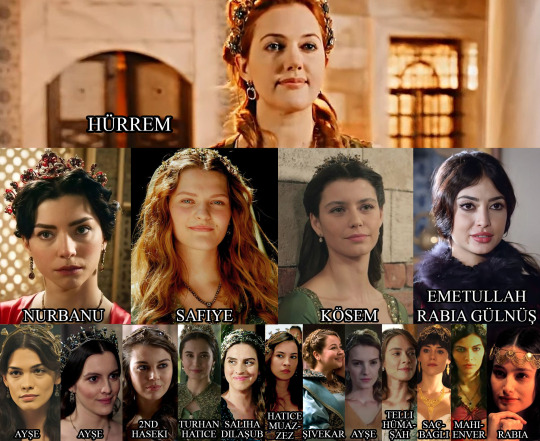
* * *
Tegnap volt Ayşe Hafsa Valide szultána halálának évfordulója. Ennek okán szeretnék egy kicsit beszélni a Haszeki szultána címről, amely részben halála miatt jött létre.
A Haszeki cím eredete
A címet magát I. Szulejmán alkotta meg 1534-ben. Ennek oka bonyolultabb volt, mint azt először gondoln��nk. Általában úgy hisszük, Szulejmán azért alkotta meg ezt a rangot Hürrem számára, mert annyira szerette és ki akarta fejezni, mennyit jelent neki. A cím azonban nem csupán a szerelemről szól, sokkal mélyebb jelentése és jelentősége van.
Szulejmán uralkodásának korai-középső periódusában rendeteget háborúzott. A háborúk idején édesanyja a fővárosban maradt és vigyázott a háremre, mindenről beszámolt a szultánnak, ami a fővárosban zajlott. Hafsa nagyszerűen megfelelt erre a szerepre, mert Szulejmán megbízhatott benne, Hafsa mindent elmondott fiának, ami történt és nagyszerűen gondját viselte Szulejmán családjának, emellett pedig mindenki szerette és tisztelte. Szulejmán ilyen háttérrel nyugodt lehetett a háborúban is, hiszen családja és a főváros jó kezekben volt. Szulejmánnak - és minden más szultának is - hatalmas szüksége volt erős, megbízható emberekre, akiket a fővárosban hagyhatott háború idejére, különösen ha hosszadalmas háború volt kilátásban. Példának okáért Szulejmán apja, I. Yavuz Szelim saját fiát, Szulejmánt hagyta meg Isztambul őrzőjének, amíg ő a keleti fronton harcolt vagy saját testvéreit üldözte. Igaz, Szulejmán nem Isztambulban volt ekkor, hanem Edirnéből kormányozta az országot és vigyázott a rendre, hiszen a hagyomány így követelte. Lényegében tehát 1534-ig Szulejmán nyugodtan hagyhata hátra a fővárost, ha háborúzni ment.
1534-ben aztán minden megváltozott. Ebben az évben indult Szulejmán egyik legkeményebb hadjárata, a perzsa hadjárat. A Szafavidák ellen vívott háborúk mindig a legnehezebbek voltak az oszmánok számára, nem volt ez másként Szulejmán esetében sem. Ilyen körülmények között azonban, pont a hadjárat előkészületei alatt Hafsa szultána súlyos beteg lett. Szulejmán nem akarta elhagyni édesanyját, ezért hadseregét előreküldte Pargali Ibrahim vezetésével, ő maga pedig anyja mellett maradt. Ez volt az első alkalom, hogy Szulejmán így cselekedett. Úgy tűnik, a hadsereg nem különösebben bánta eleinte Szulejmán döntését, bizonyára tudták, mi távollétének oka és megértették. Később, ahogy a hadjárat egyre rosszabbul ment, Szulejmánra nagy szükség volt a hadszíntéren. Hafsa végül március 19-én hunyt el. A gyászidő letelte után Szulejmánnak el kellett volna indulnia hadserege után, azonban nagyon nehéz helyzetben találta magát. Nem tudtakire bízza a háremét és a fővárost. Bár kinevezte fiát, Mehmedet Isztambul védelmezőjévé, a herceg még nagyon fiatal volt ekkor. Mehmed herceg anyja és tanítója kíséretében a Topkapi Palotába költözött, ám ez kevés volt. Hürrem volt az egyetlen, akiben Szulejmán kellőképpen megbízott, hogy ráhagyja a háremet és a fővárost, azonban a nőnek nem volt megfelelő rangja ahhoz, hogy elláthassa ezt a feladatot.
Hogyan uralhatta volna egy egyszerű ágyas a háremet és hogyan segíthette volna Isztambul ifjú őrzőjét? Hürrem bár több herceg anyja volt és a szultán kedvence, mégis nagyon távol állt rangban a hárem sok más lakójától. A háremben éltek ugyanis Szulejmán özvegy testvérei, nagynénjei, akik mint rangban, mind korban felülmúlták Hürremet. Hogy uralkodhatott volna tehát Hürrem? Szulejmán végül feleségül vette kedvenc ágyasát, Hürremet 1534 májusában. Ezzel bár hites feleség lett és pozíciója sokat javult, továbbra is csak a Hatun rang illette meg, nem uralhatta tehát a háremben élő született szultánákat. Szulejmán ezért megalkotott egy olyan rangot Hürrem számára, amellyel maga is szultána rangot kapott, így pedig alkalmassá vált arra, hogy a háremet uralja. A Haszeki szultána rang megalkotása után mindenki számára nyilvánvalóvá vált, hogy mit jelent Hürrem a szultán számára, és kénytelenek voltak elfogadni felsőbbrendűségét. Ezekután Hürrem fiával együtt nyugodtan költözhetett a Topkapi Palotába, ahonnan rendszeresen számoltak be a szultánnak az aktuális eseményekről. Jó munkát végeztek, így Szulejmán nyugodtan koncentrálhatott hadjáratára.

Na de gyakorlatban mi volt a Haszeki szultána feladata?
Eredetileg a Haszeki szultána cím a szultán fő kedvencét jelölte, akinek kiemelt státusza volt. A Haszeki szultána nagyon fontos szerepet játszott a háremben, és a második legbefolyásosabb nő lehetett a Valide szultána után. Emellett megvolt a saját lakrésze, mely a validéével vetekedett. A legendák szerint Hürrem lakrésze például titkos összeköttetésben állt Szulejmánéval, hogy zavartalanul találkozhassanak. Ha a Valide Szultána hiányzot a hierarchiából, a Haszeki vette át feladatait, amivel hatalmas gazdasgi forrásokhoz jutott hozzá, ő volt a hárem feje, a szultán tanácsadója politikai ügyekben, sőt akár befolyással lehetett a más államokkal vlaó politikára is. Ezt értjük tehát a Haszeki cím eredeti jelentőségének.
Mi történt később?
Hürrem után a következő Haszeki, Nurbanu szultána volt, az örökös, későbbi III. Murad anyja és II. Szelim partnere. Amikor Szelim trónralépett, Hürrem már régóta halott volt, így a Valide szultána rang üres volt. Ennek köszönhetően Nurbanu hasonló keretek között ténykedett, mint elődje, Hürrem. Haszekisége csupán 8 évig tartott, mely alatt hatalma, munkája nagyban hasonlított Hürremére. Szulejmán életében nem volt más nő miután megismerte Hürremet és ő volt minden fiának anyja, kivéve Musztafának, aki jóval idősebb volt Hürrem fiainál. Nurbanu hasonlóan az egyetlen nő volt Szelim életében, azonban esetük kissé eltérő volt. A testvérgyilkosság törvénye miatt Szelim és Nurbanu első fiuk születése után nem nemzett többé gyermeket, azonban hűségesek voltak egymáshoz és Nurbanu vált Szelim partnerévé, társává. Később, mikor egyetlen közös fiuk megkapta első uralnivaló provinciáját, Nurbanu a szokásokhoz híven követte fiát, ezzel hátrahagyva Szelimet. A magány idején Szelim nemzett egy gyermeket egy névtelen ágyasnak, egy kislányt. A lány születése után aztán Szelim újra hűséges lett Nurbanuhoz és nem kockáztatta többé, hogy gyermeket nemzen. A sors azonban máshogy gondolta. Szelim 1566-ban, Szulejmán halálát követően foglalhatta el a trónt. Ekkor Szelimnek gyakorlatilag egyetlen örököse volt, fia Murad, ami a pasák szerint rendkívül kevés volt. Ha Murad elhunyt volna egy betegség következtében, ami talán nem lett volna meglepő, tekintve, hogy nem volt egy erős megjelenésű figura, akkor a birodalom örökös nélkül maradt volna. Emiatt a pasák minden erejükkel azon voltak, hogy Szelimet rávegyék a további gyermeknemzésre. Végül Szelim több egyéjszakás kaland során több fiút is nemzett. Ezen ágyasok azonban szinte szégyenteljesen alacsony fizetést kaptak (50 asper egy napra) Nurbanuhoz viszonyítva (1100 asper egy napra). Szelim emellett nyilvánosan is ki akarta fejezni, hogy életében egy nő és egy örökös van, emiatt nyilvánosan Muradot nevezte meg örököséül, fia anyját pedig feleségül vette. Így bár Nurbanu mellett voltak más nők Szelim életében, mégsem vehetjük egyiküket sem komolyan, csupán a körülmények adtak létjogosultságot nekik. Épp emiatt általánosságban véve (hatalmát, befolyását, elismertségét, vagyonát, munkáját) Nurbanu Haszekisége nagyban hasonlított Hürremére, ami mindkettejüket egyértelműen a Haszekik eredeti generációjává teszi.
Mikor II. Szelim elhalálozott, fia III. Murad követte a trónon, amivel Nurbanu elérte hatalma csúcsét, Valide szultánaként. Murad, hogy bizonyítsa, mennyire tiszteli és szereti anyját egy valódi tisztséget alkotott a Valide számára, de ez egy másik történet... Murad ugyanekkor kedvenc ágyasát, Safiyét a Haszeki ranggal tüntette ki. Azonban ez a Haszekiség merőben eltért Hürrem vagy Nurbanu Haszkiségétől. Az egész rangra azért volt szükség, mert nem volt életben Valide szultána és szükség volt a pótlására. Jelen esetben azonban nagyon is volt Valide, ráadásul a történelem egyik legerőebbike, így természetes frusztrációt okozott a két rang együttes jelenléte. Mivel mind a Valide, mind a Haszeki rang hasonló feladatkörrel és befolyással bír, a két nő között verseny alakult ki, ami vérremenő harcig fajult az évek múlásával. Bár Safiye szeretett volna hasonló Haszeki lenni, mint elődei, esélye sem volt erre sem a háremen belül sem a politikai életben. Gyakorlatilag Safiye csak egy kedvenc ágyas volt, magas fizetéssel, hiába viselte a Haszeki rangot. A dolgok természetesen megváltoztak, amikor Nurbanu 1583-ban lehalálozott. Innentől Safiye valódi Haszekivé lépett elő. Fontos azonban megjegyezni, hogy Muradnak rendszeresen voltak más ágyasai Safiye mellett ebben az időszakban és jóval nagyobb vagyonnal és befolyással rendelekzdtek, mint például II. Szelim elfeledett ágyasai. Murad ágyasai közül többen is tudtak jótékony szervezetet alapítani és egyéb más adaozásokat csinálni, melyre aligha lettek volna képesek, ha annyi a fizetésük, mint II. Szelim ágyasainak. Ettől függetlenül természetesen Safiyéhez nem érhettek fel.
III. Murad halálával Safiye Valide szultána rangot kapott fia, III. Mehmed mellett és elérte befolyása csúcsát. Safiye mindneki másnál jobban tudta milyen szörnyűséges, ha egyszerre van jelen egy erős Valide és egy Haszeki, épp emiatt, megtiltotta fiának, hogy bármelyik ágyasát Haszeki rangra emelje, így III. Mehmed uralkodása alatt Safiynek nem igazán volt vetélytársa.
Mehmed halálával, alig 13 éves fia, I. Ahmed került trónra, 1603-ban. Hamarosan ő is kinevezett magának egy Haszekit, kisebbik fiának anyja, Köszem kapta meg ezt a titulust. Köszem erős asszony volt, Ahmed háremében is kiemelt szerepe volt, azonban sem befolyásában sem feladatköreiben nem hasonlíthatjuk az előbbi Haszekikhez. Bár Köszem helyzete hasonló volt Hürrem vagy Nurbanu helyzetéhez, hisz a szultán anyja nem élt, így a Haszeki volt a legmagasabb rangú nő, Köszem mégsem tudott felérni elődeihez. Nem volt politikai befolyása, Ahmed nem engedte meg neki, hogy aktivizálja magát a politikában. Emellett saját támogatói körrel sem rendelkezett, nem nyomták nehéz terhek a vállait, hiszen a hárem vezetése sem az ő feladata volt. Tény, hogy volt beleszólása a hárem életébe, de azt Haci Musztafa Aga, fő fekete eunuch irányította, aki egyfajta apafigura volt a szultán életében. Köszem Haszekisége inkább volt egy kiemelt kedvenc szerepe, mint az eredeti Haszekiség.
A következő néhány év teljesen kaotikus volt a Haszeki rang szempontjából. A soronkövetkező szultán, II. Oszmán is odaadta a titulust egyik ágyasáank, azonban a nőnek nem volt semmiféle politikai befolyása vagy akár hárembeli befolyása (még úgy sem, hogy nem volt Valide szultána Oszmán uralkodása során). Fizetését leszámítva semmi köze nem volt a Haszekikhez ennek az ágyasnak.
A következő szultán IV. Murad szintén Haszekivé tette egyik ágyasát, aki éveken keresztül dominálta Murad szerelmi életét, azonban politikai befolyása nem volt és a Valide szultánával sem versenyezhetett a háremben. Ayşe Haszeki is inkább volt jó fizetéssel rendelkező kedven ágyas, mintsem Haszeki. Ráadásul Murad uralkodásána végén feltűnt egy második Haszeki, amivel az egész Haszeki szultána rang létjogosultságát sikerült lerombolni.
A Haszeki szultána rangot bár Murad is erőteljesen elkezdte rombolni, a munkát öccse, I. Ibrahim végezte be. Ibrahim minden kedvenc ágyasának kiosztotta a Haszeki rangot, amivel összesen 8 Haszekit produkált. Ezeket a nőket egyáltalán nem hasonlíthatjuk a korábbi Haszekikhez, még Ayşe Haszekihez sem! Úgy tűnt, a Haszeki rang teljesen tönkre ment és megsemmisült.
Egy kis fényt hozott a következő uralkodó, IV. Mehmed, aki újra logikus módon használta ezt a rangot és kedvenc ágyasának, gyermekei anyjának, Emetullah Rabia Gülnüşnek adta oda. Emetullah Rabia Gülnüş függetlenül attól, hogy volt életben Valide szultána politika befolyásra is szert tudott tenni, emellett befolyással bírt a szultánra és a háremre is. Esete kissé hasonlít Safiye fiatalkori Haszekiségére, azzal a különbséggel, hogy IV. Mehmed édesanyja, Turhan Hatice Valide szultána és közte sosem volt harc a hatalomért, elfogadták és tiszteletben tartották egymást. Így bár összességében Emetullah Rabia Gülnüşt nem hasonlíthatjuk az eredeti Haszekikhez, mint Hürrem vagy Nurbanu, mégis felüdülés volt Ibrahim 8 Haszekije után látni valakit, aki legalább hasonlított a Haszeki eredeti értelmére.
IV. Mehmed öccse, II. Ahmed volt az utolsó szultán, aki rendelkezett Haszeki szultánával. Ez a nő Rabia volt, a szultán gyermekeinek anyja, kedvenc ágyasa. Bár fizetése a Haszekire jellemző, rendkívül magas fizetés volt, nem volt semmilyen beolyása, így inkább volt egyszerű ágyas, mint valódi Haszeki. A Haszeki szultána címet hamarosan végleg eltörölték és az egész hárem struktúra nagyban megváltozott, vele együtt az összes rang is. Rabia halálával pedig eltávozott az utolsó Haszeki szultána és a cím örökre eltűnt.

#haseki#haseki sultana#Haseki Hürrem Sultan#hürrem#haseki nurbanu sultan#Nurbanu Sultan#nurbanu valide sultan#Suleyman I#Suleiman I#Selim II#yavuz selim#selim i#Safiye#haseki safiye sultan#Murad III#Mehmed III#haseki kösem sultan#mahpeyker kösem#Kösem sultan#kösem#hürrem sultan#safiye sultan#Ahmed I#Osman II#Murad IV#ibrahim I#ayse haseki sultan#Ayse#ayşe haseki#haseki turhan sultan
105 notes
·
View notes
Quote
What we have is half a century of transition, at the heart of which the Haile-i Osmaniye is located, through which forces of change and continuity run concurrently; toward the second half of the seventeenth century, however, seniority was clearly seen to prevail. Another possible explanation for the survival and enthronement of Mustafa is the ascendancy of the valide sultan both in itself and at the expense of the haseki sultan. Peirce convincingly entitles Süleyman’s reign (1520 – 66) the age of the haseki and the period from Süleyman’s death to the emergence of the Köprülü grand vezirs (1566 –1656) that of the valide. These insightful observations, taken a step further, suggest that the haseki institution was less in congruity with the dynasty’s history than the overwhelming dominance of the valide. Also, we seem to have in the period 1520 –1656 a historical process in which personalities carry a substantial explanatory force. These are Kanuni Sultan Süleyman and his consort and then wife, Hürrem Sultan, at the beginning of the process and Kösem Sultan, haseki of Ahmed I and valide of Murad IV and Ibrahim I, at a crucial juncture. Rather than being the zenith of Ottoman civilization, as the traditional Orientalist narrative of a subsequent decline has framed it, Süleyman’s reign seems to have been, in certain respects, strewn with “irregularities,” among which the royal household seems to have figured prominently: for example, the unprecedented and never again repeated status of his beloved daughter Mihrimah. I think that the explanation of the rise of the haseki institution and its demise owes much to the particular personalities of Süleyman and Hürrem and to their relationship as the royal couple. At the risk of being simplistic, I would venture that the haseki institution and Hürrem's personality and the influence she wielded on Süleyman were inseparable. In a similar vein, though in a way more typical of the ruling house’s history, the explanation for the decline of the haseki and the re-emergence of the valide in the first decades of the seventeenth century has much to do with Kösem’s personality and the fact that in she had ceased being a haseki and, if she were to regain power, could obtain it only from the position of valide sultan. The woman who might have played a crucial role in Mustafa I’s survival was not his mother but his brother’s (Ahmed I’s) consort, Kösem Sultan. She must have realized the personal gain that might stem from the transition to seniority, coupled with the fact that she was no longer haseki but had sons “in waiting.” And indeed, according to the Venetian ambassador, Kösem 'lobbied to spare Mustafa the fate of fratricide with the ulterior goal of saving her own sons from the same fate.' Mustafa’s own valide, an Abkhasian consort of Mehmed III’s whose name is unknown, turned out to be, though not at all insignificant, no Kösem. From the revealing use Peirce makes of the privy purse registers to establish the harem’s institutional and personal hierarchies, it is evident that she was not one of the outstanding harem personalities of the period, like Nurbanu and Safiye earlier and Turhan later. However, while Mustafa’s mother may not have been as instrumental as Kösem in saving her son from fratricide, his mental state allowed her to assume center stage as regent, especially during his second, longer reign. From her location in the Old Palace she was a key figure in the deposition and assassination of Osman II and showed that she was no stranger to the art of damad (son-in-law) politics.
Taken from: An Ottoman Tragedy: History and Historiography at Play by Gabriel Piterberg
#historicalquotes#ottoman history#history#kosem sultan#hurrem sultan#halime sultan#quote#the statement of how Suleymanic period was irregular is so apt#it was also both the peak and transitory period in many ways IMO#more complex than different narratives (on any extreme) try to make it to be
33 notes
·
View notes
Text
The Rise and The Fall of Kosem Sultan (Part II - Episode I)
Kosem Sultan: Rise to Power Episode I

continued from ⤵️
Anastasia left Ahmed's Room and went to face rebels. She reached there and told them that Sultan and Shehzade Mustafa are alive however their health is in critical condition. She assured them that she takes guarantee that Palace is telling truth and is not hiding anything. She also told them to go back and return after sometime to see Sultan well and fine. When rebels started to disperse one of them shot Anastasia and she fell down. After a moment Anastasia became conscious and stood up. This was due to Taveez (object of protection) given by Aziz Mehmud Hudayi. Anastasia came back to the palace and was taken to palace clinic for medical aid. The rebels finally dispersed and on the other hand Anstasia's father reached Isatanbul in search of his daughter. Next morning everyone praises Anastasia including Valide Sultan. She is presented as the Hero in front of everyone in the palace and then due to her heroic acts she was named Kosem (the leader). Ahmed's condition improved but he was unconscious. There was chance of another rebellion so for speedy recovery Kosem went to Fortune Teller Magician who gave her a medicine and told her that Ahmed will be fine only at one cost, that Kosem will see the death of all her loved ones, she accepted this and took the medicine. On the other hand her father is still in search of her. Safiye made pact with Giray brothers, the Crimean Hans (thinking that Ahmed and Mustafa would die soon) that Sahin Giray will acsend the ottoman throne. The coronation preparations were complete. On the same day of Sahin's coronation Ahmed suddenly woke up fine and in good health. When Sahin was about to be declared Sultan, by everyone's surprise Ahmed came to durbar, beheaded the minister and proclaimed that he's still the Sultan and will punish everyone who created problems during his illness. Kosem then came to meet him and he called her Nasia, she replied that she is not Nasia, Anastasia, Hatice or Mahpeker. From now onwards she is KOSEM.

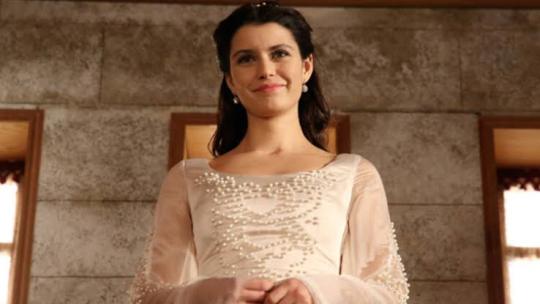

Kosem breaks her alliance with Safiye after watching her actions during Ahmed's illness. Kosem's father found her through the help of Alexander (now Iskender) but Safiye learns about this and arrests him. Kosem learns that it was Fahriye who poisoned Ahmed and Mustafa due to her love interest. Safiye threatens her that she'll kill her father if she tells this to Sultan. She uses Kosem and then kills her Father. Fahriye is not married with Mehmed Giray (her love interest) instead she is married to Dervaish Pasha (closest to Ahmed) which Ahmed approved and wedding preparations began. On the other hand Dervaish Pasha confesses his love for Valide Sultan Handan to her about which she's angry but she spares his life despite this. Kosem pledges to take revenge of her father. Cennet Kalfa (Safiye's Confident) is told by Kosem that the reason of her burnt face is Safiye. When she was Mehmed III concubine, it was Safiye who schemed against her and burnt her face. Cennet after learning this switched her side secretly and gives Kosem the ring of her mother which her father brought from Tinos which Safiye kept with her. Kosem threatens. Safiye that she will tell everything to Sultan but she didn't give any attention to her. Kosem schemed and caught the letter of Fahriye in which it was written that she poisoned Sultan. She showed this letter to Safiye and told her that she will return this letter only if she leaves the Topkapi Palace and shifts to Aski Palace. Safiye agreed and left for Aski Palace. On her way when she unfolded Fajriye's letter given by Kosem she found out that it was simple paper and Kosem had played with her and the letter is still with her. Cennet confesses that she helped Kosem and she officially changed sides. Sultan gives Kosem the crown of great Hurrem Sultan. Kosem walks in the palace as if shes the queen. Kosem hands over the letter to Ahmed and told him all the truth about Fahriye. He despite of this becomes disappointed from Kosem as he said that he only liked her due to her Innocence but now she's no more innocent as she is also scheming like other Sultanas.
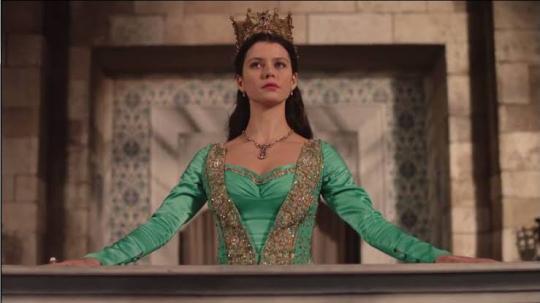
On the other hand Mahfiruz gives birth to Sultan's first child a son named Osman. This created jealousy in Kosem's heart. Sultan is not talking to Kosem and she is not allowed to visit him nor to come in his room. Kosem learns that she's pregnant and soon she gives birth to Sultan's second son Mehmed. Sultan is still not taking to her so she decided to tell him whole truth about the murder of her father. She told him that she only took revenge from Safiye because she killed her father. After learning this his heart melts and he is reunited with Kosem. Fahriye on the other hand takes refuge in Mahmood Hudayi Welfare where it is not allowed to kill anyone. Ahmed tries to get her out but she didn't. Kosem again schemed with Zulfikar Pasha and Mehmed Giray and made her come out of the welfare and then arrested her. Sultan praises the efforts of Kosem and Zulfikar. She is presented to Sultan and she pleads him to forgive her. He tells him that he'll think about this matter. Fahriye settles back in her place with Dervaish Pasha where he executes her on the order of Sultan Ahmed. Safiye when learns about her daughter's executions goes into. Deep sorrow and pledges to take revenge from Ahmed.
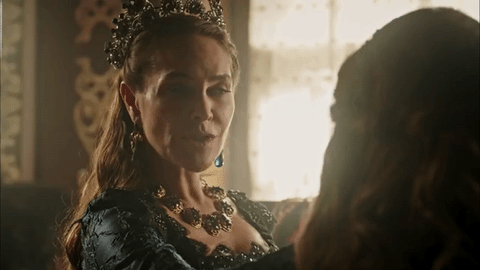
Ahmed goes to hunt with his guards where he faces assassination attempt on himself but he was saved by Dervaish who put his life in danger. Safiye starts rebellion in palace. She told Jannisaries that Ahmed is no more. They believed and sided with her. She planed to put Mustafa on throne. Kosem saves the life of Valide Sultan, Osman and Mehmed however unfortunately Mahfiruz is killed by Safiye's guards. Safiye ordered execution of Kosem but she is spared by Bulbul (Safiye's Agha) who admired her. She along with Valide and her son's took refuge in a girl's house named Meleki. At the time of Mustafa's crowning Ahmed, by everyone's surprise appeared and kills pashas who sided with Safiye. Zukfikar and Mehmed Giray sided with Ahmed. Safiye tries to poison herself but she is caught by Ahmed who then imprisoned her. All her accessories and property was taken away. Humashah (Safiye's daughter) arrives in the capital.


Kosem learns from Halime (mother of Mustafa) that Handan and Dervaish are in love with each other and that Dervaish killed Mehmed III. Kosem schemed again but now against Dervaish and Handan, she managed to tell Sultan about Dervaish. Humashah on the other hand falls in love with Zulfikar Pasha. She's living in the palace and was convincing Sultan to release Safiye. Sultan learns that Dervaish killed Mehmed III only to save Ahmed's life however Ahmed executed Dervaish. (Who was then Prime minister) on charges of Sultan's murder. Handan commits suicide in fear that Ahmed will learn about her love and also because she was in deep sorrow after the execution of Dervaish. Palace mourns the loss of Valide Sultan. Huamshah is made incharge of Harem.

After sometime Safiye is released. Humashah's husband comes to. Capital and asks Sultan to let Humashah go with him but she refuses. Humashah and Safiye learns that Iskender is Shehzade Safiye's son and Humashah's brother. Kosem learns that she is again pregnant. She tells this good news to Sultan who then makes her incharge of Harem.
Kosem after so much struggle finally managed to rule Harem.

To be continued
Coming up next - Kosem Sultan: Rise to Power Episode 2
8 notes
·
View notes
Photo
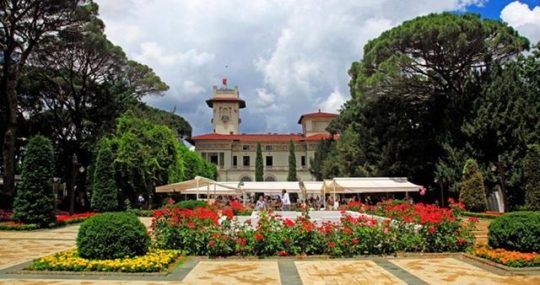
Palace Weddings on the Ottoman Dynasty
Shows and fireworks on the Golden Horn
That day the heart of Istanbul and of the empire was beating at this procession.
The participants wore their best outfits and carried their most valuable arms and pistols. Ahmet III was trying to show his power and wealth to his people with, this street parade instead of revealing his supremacy to the entire world in the battlefields. With the feasts and festivities he organized, with the mansions he had built during the Tulip Era and with all the luxury, he had changed the outlook of the capital city and ushered a new epoch in the Empire. The wedding day was a historic day for Istanbul. Everybody on the streets was happy. Joy was in the air. The streets were overcrowded. The windows were wide open. Faces beneath the veils were praying for the happiness of the bride and for the wealth, dashing look of the Sultan and his procession.
The procession was literally throwing money on the streets. People were stepping on each other to snap the coins. The procession arrived Eyiip, at the palace, prepared for Fatma Sultan. The procession participants disintegrated. Everyone had an entertainment to watch. Padishah and his wife went back to their palace. In the evening shows were staged on the Golden Horn, while fireworks were being lit on rafts.
Silahtar Ali Pasha dies in war
After this tiring and overwhelming wedding, which lasted for 25 days…
Silahtar Ali Pasha could not have Fatma Sultan. He had to send her back to the palace and wait for a while until she grows up and becomes a young lady. Silahtar Ali Pasha had to wait eight years for Fatma Sultan’s adolescence. He never had a chance to have a single private moment with her. Unfortunately, he died in Pclervaradin War before he could reunite with his fiancee, for whom he spent a fortune and organized feasts for weeks in order to gain supporters for his love. He became a martyr before he could realize his dreams.
Kosem Sultan marries her daughters
In the Ottoman Empire, the Sultans could marry before they were adolescents, but they could not share the same house with their spouses. This tradition was started by the well-known empress, Valide Kosem Sultan. For the sake of fortifying her position in the palace, Kosem Sultan married her minor daughters with the elite and reputable pashas of the time. Likewise, Ahmet 1 married her daughters Ayse Sultan and Fatma Sultan at the age of 13.
Sultan Ibrahim married Gevher Sultan at 3, Beyhan Sultan at 2. Emine, Ay§e and Safiye Sultans, the three daughters of Mustafa II, were married at 7. As mentioned above, Ahmet III had his daughters Fatma and Ummugulsum married at 5 and 2. Moreover, he married Atike Sultan at 12. Mustafa III married his son §ah Sultan at 3. This abnormality continued until the reign of MahmuL II, who pul an end to this situation and set the marriage time as the adolescence.
Multiple marriages
This weird tradition described above and the ongoing wars had a natural consequence. The sultans were widowed many times and were married more than once. The daughters of Ahmet I, Ayse, Fatma and Safiye, all married 6 times, which was a dynasty record. This record is followed by Safiye and Emine, daughters of Mustafa II, who married 4 times. So did Atike Sultan, daughter of Ahmet III.
Source: https://www.ensarislamoglu.com/palace-weddings-ottoman-dynasty/
0 notes
Photo
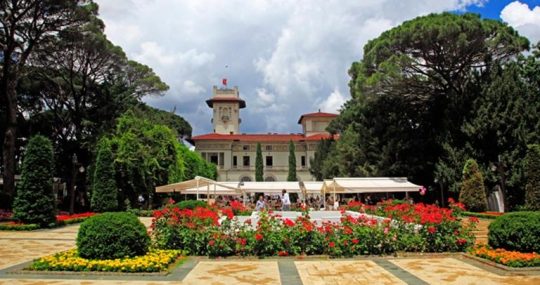
Palace Weddings on the Ottoman Dynasty
Shows and fireworks on the Golden Horn
That day the heart of Istanbul and of the empire was beating at this procession.
The participants wore their best outfits and carried their most valuable arms and pistols. Ahmet III was trying to show his power and wealth to his people with, this street parade instead of revealing his supremacy to the entire world in the battlefields. With the feasts and festivities he organized, with the mansions he had built during the Tulip Era and with all the luxury, he had changed the outlook of the capital city and ushered a new epoch in the Empire. The wedding day was a historic day for Istanbul. Everybody on the streets was happy. Joy was in the air. The streets were overcrowded. The windows were wide open. Faces beneath the veils were praying for the happiness of the bride and for the wealth, dashing look of the Sultan and his procession.
The procession was literally throwing money on the streets. People were stepping on each other to snap the coins. The procession arrived Eyiip, at the palace, prepared for Fatma Sultan. The procession participants disintegrated. Everyone had an entertainment to watch. Padishah and his wife went back to their palace. In the evening shows were staged on the Golden Horn, while fireworks were being lit on rafts.
Silahtar Ali Pasha dies in war
After this tiring and overwhelming wedding, which lasted for 25 days…
Silahtar Ali Pasha could not have Fatma Sultan. He had to send her back to the palace and wait for a while until she grows up and becomes a young lady. Silahtar Ali Pasha had to wait eight years for Fatma Sultan’s adolescence. He never had a chance to have a single private moment with her. Unfortunately, he died in Pclervaradin War before he could reunite with his fiancee, for whom he spent a fortune and organized feasts for weeks in order to gain supporters for his love. He became a martyr before he could realize his dreams.
Kosem Sultan marries her daughters
In the Ottoman Empire, the Sultans could marry before they were adolescents, but they could not share the same house with their spouses. This tradition was started by the well-known empress, Valide Kosem Sultan. For the sake of fortifying her position in the palace, Kosem Sultan married her minor daughters with the elite and reputable pashas of the time. Likewise, Ahmet 1 married her daughters Ayse Sultan and Fatma Sultan at the age of 13.
Sultan Ibrahim married Gevher Sultan at 3, Beyhan Sultan at 2. Emine, Ay§e and Safiye Sultans, the three daughters of Mustafa II, were married at 7. As mentioned above, Ahmet III had his daughters Fatma and Ummugulsum married at 5 and 2. Moreover, he married Atike Sultan at 12. Mustafa III married his son §ah Sultan at 3. This abnormality continued until the reign of MahmuL II, who pul an end to this situation and set the marriage time as the adolescence.
Multiple marriages
This weird tradition described above and the ongoing wars had a natural consequence. The sultans were widowed many times and were married more than once. The daughters of Ahmet I, Ayse, Fatma and Safiye, all married 6 times, which was a dynasty record. This record is followed by Safiye and Emine, daughters of Mustafa II, who married 4 times. So did Atike Sultan, daughter of Ahmet III.
Source: https://www.ensarislamoglu.com/palace-weddings-ottoman-dynasty/
0 notes
Photo

Palace Weddings on the Ottoman Dynasty
Shows and fireworks on the Golden Horn
That day the heart of Istanbul and of the empire was beating at this procession.
The participants wore their best outfits and carried their most valuable arms and pistols. Ahmet III was trying to show his power and wealth to his people with, this street parade instead of revealing his supremacy to the entire world in the battlefields. With the feasts and festivities he organized, with the mansions he had built during the Tulip Era and with all the luxury, he had changed the outlook of the capital city and ushered a new epoch in the Empire. The wedding day was a historic day for Istanbul. Everybody on the streets was happy. Joy was in the air. The streets were overcrowded. The windows were wide open. Faces beneath the veils were praying for the happiness of the bride and for the wealth, dashing look of the Sultan and his procession.
The procession was literally throwing money on the streets. People were stepping on each other to snap the coins. The procession arrived Eyiip, at the palace, prepared for Fatma Sultan. The procession participants disintegrated. Everyone had an entertainment to watch. Padishah and his wife went back to their palace. In the evening shows were staged on the Golden Horn, while fireworks were being lit on rafts.
Silahtar Ali Pasha dies in war
After this tiring and overwhelming wedding, which lasted for 25 days…
Silahtar Ali Pasha could not have Fatma Sultan. He had to send her back to the palace and wait for a while until she grows up and becomes a young lady. Silahtar Ali Pasha had to wait eight years for Fatma Sultan’s adolescence. He never had a chance to have a single private moment with her. Unfortunately, he died in Pclervaradin War before he could reunite with his fiancee, for whom he spent a fortune and organized feasts for weeks in order to gain supporters for his love. He became a martyr before he could realize his dreams.
Kosem Sultan marries her daughters
In the Ottoman Empire, the Sultans could marry before they were adolescents, but they could not share the same house with their spouses. This tradition was started by the well-known empress, Valide Kosem Sultan. For the sake of fortifying her position in the palace, Kosem Sultan married her minor daughters with the elite and reputable pashas of the time. Likewise, Ahmet 1 married her daughters Ayse Sultan and Fatma Sultan at the age of 13.
Sultan Ibrahim married Gevher Sultan at 3, Beyhan Sultan at 2. Emine, Ay§e and Safiye Sultans, the three daughters of Mustafa II, were married at 7. As mentioned above, Ahmet III had his daughters Fatma and Ummugulsum married at 5 and 2. Moreover, he married Atike Sultan at 12. Mustafa III married his son §ah Sultan at 3. This abnormality continued until the reign of MahmuL II, who pul an end to this situation and set the marriage time as the adolescence.
Multiple marriages
This weird tradition described above and the ongoing wars had a natural consequence. The sultans were widowed many times and were married more than once. The daughters of Ahmet I, Ayse, Fatma and Safiye, all married 6 times, which was a dynasty record. This record is followed by Safiye and Emine, daughters of Mustafa II, who married 4 times. So did Atike Sultan, daughter of Ahmet III.
Source: https://www.ensarislamoglu.com/palace-weddings-ottoman-dynasty/
0 notes
Photo

Palace Weddings on the Ottoman Dynasty
Shows and fireworks on the Golden Horn
That day the heart of Istanbul and of the empire was beating at this procession.
The participants wore their best outfits and carried their most valuable arms and pistols. Ahmet III was trying to show his power and wealth to his people with, this street parade instead of revealing his supremacy to the entire world in the battlefields. With the feasts and festivities he organized, with the mansions he had built during the Tulip Era and with all the luxury, he had changed the outlook of the capital city and ushered a new epoch in the Empire. The wedding day was a historic day for Istanbul. Everybody on the streets was happy. Joy was in the air. The streets were overcrowded. The windows were wide open. Faces beneath the veils were praying for the happiness of the bride and for the wealth, dashing look of the Sultan and his procession.
The procession was literally throwing money on the streets. People were stepping on each other to snap the coins. The procession arrived Eyiip, at the palace, prepared for Fatma Sultan. The procession participants disintegrated. Everyone had an entertainment to watch. Padishah and his wife went back to their palace. In the evening shows were staged on the Golden Horn, while fireworks were being lit on rafts.
Silahtar Ali Pasha dies in war
After this tiring and overwhelming wedding, which lasted for 25 days…
Silahtar Ali Pasha could not have Fatma Sultan. He had to send her back to the palace and wait for a while until she grows up and becomes a young lady. Silahtar Ali Pasha had to wait eight years for Fatma Sultan’s adolescence. He never had a chance to have a single private moment with her. Unfortunately, he died in Pclervaradin War before he could reunite with his fiancee, for whom he spent a fortune and organized feasts for weeks in order to gain supporters for his love. He became a martyr before he could realize his dreams.
Kosem Sultan marries her daughters
In the Ottoman Empire, the Sultans could marry before they were adolescents, but they could not share the same house with their spouses. This tradition was started by the well-known empress, Valide Kosem Sultan. For the sake of fortifying her position in the palace, Kosem Sultan married her minor daughters with the elite and reputable pashas of the time. Likewise, Ahmet 1 married her daughters Ayse Sultan and Fatma Sultan at the age of 13.
Sultan Ibrahim married Gevher Sultan at 3, Beyhan Sultan at 2. Emine, Ay§e and Safiye Sultans, the three daughters of Mustafa II, were married at 7. As mentioned above, Ahmet III had his daughters Fatma and Ummugulsum married at 5 and 2. Moreover, he married Atike Sultan at 12. Mustafa III married his son §ah Sultan at 3. This abnormality continued until the reign of MahmuL II, who pul an end to this situation and set the marriage time as the adolescence.
Multiple marriages
This weird tradition described above and the ongoing wars had a natural consequence. The sultans were widowed many times and were married more than once. The daughters of Ahmet I, Ayse, Fatma and Safiye, all married 6 times, which was a dynasty record. This record is followed by Safiye and Emine, daughters of Mustafa II, who married 4 times. So did Atike Sultan, daughter of Ahmet III.
Source: https://www.ensarislamoglu.com/palace-weddings-ottoman-dynasty/
0 notes
Photo
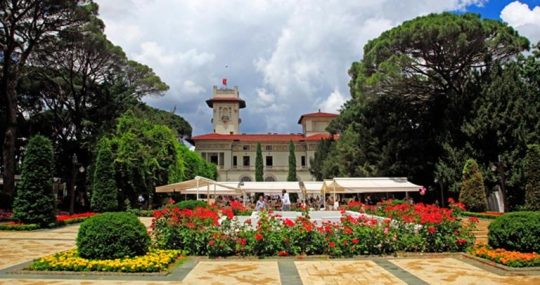
Palace Weddings on the Ottoman Dynasty
Shows and fireworks on the Golden Horn
That day the heart of Istanbul and of the empire was beating at this procession.
The participants wore their best outfits and carried their most valuable arms and pistols. Ahmet III was trying to show his power and wealth to his people with, this street parade instead of revealing his supremacy to the entire world in the battlefields. With the feasts and festivities he organized, with the mansions he had built during the Tulip Era and with all the luxury, he had changed the outlook of the capital city and ushered a new epoch in the Empire. The wedding day was a historic day for Istanbul. Everybody on the streets was happy. Joy was in the air. The streets were overcrowded. The windows were wide open. Faces beneath the veils were praying for the happiness of the bride and for the wealth, dashing look of the Sultan and his procession.
The procession was literally throwing money on the streets. People were stepping on each other to snap the coins. The procession arrived Eyiip, at the palace, prepared for Fatma Sultan. The procession participants disintegrated. Everyone had an entertainment to watch. Padishah and his wife went back to their palace. In the evening shows were staged on the Golden Horn, while fireworks were being lit on rafts.
Silahtar Ali Pasha dies in war
After this tiring and overwhelming wedding, which lasted for 25 days…
Silahtar Ali Pasha could not have Fatma Sultan. He had to send her back to the palace and wait for a while until she grows up and becomes a young lady. Silahtar Ali Pasha had to wait eight years for Fatma Sultan’s adolescence. He never had a chance to have a single private moment with her. Unfortunately, he died in Pclervaradin War before he could reunite with his fiancee, for whom he spent a fortune and organized feasts for weeks in order to gain supporters for his love. He became a martyr before he could realize his dreams.
Kosem Sultan marries her daughters
In the Ottoman Empire, the Sultans could marry before they were adolescents, but they could not share the same house with their spouses. This tradition was started by the well-known empress, Valide Kosem Sultan. For the sake of fortifying her position in the palace, Kosem Sultan married her minor daughters with the elite and reputable pashas of the time. Likewise, Ahmet 1 married her daughters Ayse Sultan and Fatma Sultan at the age of 13.
Sultan Ibrahim married Gevher Sultan at 3, Beyhan Sultan at 2. Emine, Ay§e and Safiye Sultans, the three daughters of Mustafa II, were married at 7. As mentioned above, Ahmet III had his daughters Fatma and Ummugulsum married at 5 and 2. Moreover, he married Atike Sultan at 12. Mustafa III married his son §ah Sultan at 3. This abnormality continued until the reign of MahmuL II, who pul an end to this situation and set the marriage time as the adolescence.
Multiple marriages
This weird tradition described above and the ongoing wars had a natural consequence. The sultans were widowed many times and were married more than once. The daughters of Ahmet I, Ayse, Fatma and Safiye, all married 6 times, which was a dynasty record. This record is followed by Safiye and Emine, daughters of Mustafa II, who married 4 times. So did Atike Sultan, daughter of Ahmet III.
Source: https://www.ensarislamoglu.com/palace-weddings-ottoman-dynasty/
0 notes
Note
Hello,sorry for bothering I saw the topic about the daughters of Sultan Ibrahim,I would like to ask your opinion about who was or were the daughter(s) of Turhan Sultan? Actually did she even have daughters? Hammer mentions that Turhan had tried to save the lives of her sons in laws Sari Kenan Pasa and Haseki Mehmed Pasa from the wrath of Koprulu Mehmed Pasa,but couldn't save their lives due to their participemce in the opposite faction and also because of his corruption deeds which were large too(about Haseki Mehmed Pasa). I read this in the Croatian translation of Hammer's History of Ottoman empire V6(page 458). Whoever were the identitites of(Atike or Gevherhan)of the princess who was wife of Sari Kenan Pasa,and the wife of Haseki Mehmed Pasa(Ayse or Beyhan)seems to be probably daughters of Hatice Turhan Sultan? Also J.Dumas mention in Les perles de nacre sultanate in page 83 Ayse is buried along either to her father Ibrahim or either along Mustafa I. There is also found notebook:Ayşe Sultan’ın Cihaz (Çeyiz) Defteri in name Ayse Sultan about items and jewelry for her dowry in 1682 found in the archives by researchers,who is identified as most likely sister of Mehmed IV. But maybe she was not his sister,but possibly his daughter? Also J.Dumas mention in Les perles de nacre sultanate page 496 mention that Atike(daughter of Ibrahim I) was married 4 times:firstly to Cafer Pasa,secondly to Sari Kenan Pasa,thirdly to Mostarli Ismail Pasa and forthly to Cerah Kasim Pasa. There is also article about Rabia Sultan(Haseki of Ahmed II)-Kuzguncuk Asiye Sultan ve Haseki Rabia Sultan Yalilari,which mentiones that Gevherhan Sultan(daughter of Ibrahim I),had left her lands and mansions to the haseki of Ahmed II-Rabia Sultan and his daughter Asiye Sultan. Ragusian sources also mention Kaya Sultan(daughter of Ibrahim I)as Safiye Sultan dated in 1662 as widow of Haydaragzade Mehmed Pasa in Per favore de la soltana in page 113. Hammer also claims that Kaya Sultan was sister of Suleiman II(according to the Croatian translation that they shared same mother this is it mentioned in page 431 accordring to Croatian translation). In your opinion did Atike(daughter of Ibrahim I) existed after all and if she didn't who was the sister said by contemporary sources to be own sister of Mehmed IV? Also in the Croatian translation(page 494)of Hammer' History of Ottoman empire V6,that Turhan Sultan had took under her care and raised the orphan son of some man named Ali. Do you know who was that man Ali excatly and how was he clouse to Mehmed IV? Once again sorry for bothering and for the many questions.
Hello and no problem, you’re not bothering!!
So, I can’t read your citations because I use the French version of Hammer’s work and I can’t find what you’re talking about because I think the books are divided differently. Volume 6 of the French version goes from 1547 to 1574.
Anyway, the issue here is: was Turhan Hatice protecting those men because they were the husband(s?) of her daughter(s?) or was she doing it as the valide sultan, the custodian of the dynasty, after receiving those princesses’ appeals? It’s the same issue we have with Ayşe Hafsa trying to stop Ferhad Pasha’s execution. Did she do it because Beyhan was one of her daughters or only as the valide sultan?
The thing is foreigners didn’t separate between sisters and half-sisters, so it is almost impossible to understand who the princesses’ mothers were.
I’ve already talked about Gevherhan binti Ibrahim and Atike binti Ibrahim here and as of now I have nothing to add. There is a clear problem with Ahmed I’s, Murad IV’s, and Ibrahim’s daughters because they all seem to have the same names and we don’t have precise dates of their births and deaths. The fact that these sultans lost many children is another issue, as their mausoleums are overcrowded and it is difficult to identify all the caskets.
As for Dumas’ family tree, I think she followed Alderson and therefore accepted his sources (mainly von Hammer). If you read the ask I linked above, you’ll see there is a lot of confusion with Gevherhan’s husbands because they seem to parallel Atike’s, but Atike binti Ibrahim was never mentioned by Ragusian diplomats, who called that princess Gevherhan instead.
Let’s move onto “Bir Sultanın Mücevherleri. Ayşe Sultan’ın Cihaz (Çeyiz) Defteri”, an essay by Gülser Yardım.
So, the author says that the Ayşe Sultan in question is most likely a sister of Mehmed IV because Turkish sources never mentioned a daughter of Mehmed IV called Ayşe. On this blog, though, we know that a Ayşe Sultan binti Mehmed IV really existed because the Venetian ambassador Giacomo Querini reported in 1676 that Mehmed IV’s favourite Gülbeyaz gave birth to a princess in Babadağ two years earlier:
“Ora tiene due figliuoli maschi e due femmine. […] La figliuola Aidè si ritrova in età di sette anni e resta collocata in matrimonio a Culoglù Musaip, favorito […] L'altra piccola figliuola si chiama Attigiè, cioè Sparaviere, nata ultimamente a Babà Daghi [Babadağ, Romanian city] dalla Tulbeias [Gülbeyaz], cioè Rosa Bianca, e tuttochè si trovi in età di due anni, resta promessa in matrimonio a Carà Mustafà Caimacan in età avanzata di 60 anni.”
He confused the two princesses: Hatice is the older one who will marry Musahib Mustafa Pasha, while Ayşe is the younger one, born from Gülbeyaz. Moreover, Hammer clearly states that the daughter of “the little Haseki” (Gülbeyaz) is betrothed to Kara Mustafa Pasha:
la fille de la petite Khasseki destinée en mariage au kaïmakam Kara Moustafa (Histoire, vol. 11, p. 419)
According to Uluçay, “the little princess” was married to Kara Mustafa Pasha during Hatice’s wedding to Musahib Mustafa Pasha. Hammer doesn’t mention this but says that Musahib Mustafa Pasha had gifts for the sultan, the Valide Sultan, the eldest prince, the Haseki, his fiancée (Hatice), and the daughter of the “little Haseki”. During the festivities, though, Kara Mustafa Pasha received sable fur for being the second son-in-law of the sultan. I think this was some kind of betrothal, not a wedding.
Anyway, back to Ayşe. It is interesting that Bir Sultanın Mücevherleri. Ayşe Sultan’ın Cihaz (Çeyiz) Defteri says that most of the jewels Ayşe received were then given to other women:
A diamond crest was given to Ümmi Sultan in 1698-99
A set of diamonds was given to Emetullah Kadın (Ahmed III’s consort) in 1703-04
A garnets bracelet was given to Afife Kadın in 1693-94
A diamonds bracelet was given to Alicenab Kadın in 1697-98
and so on.
Now, I think that Ayşe Sultan died very young if one of the bracelets in her dowry was given to Afife Kadın as early as 1693. Also, Kara Mustafa Pasha was executed in 1683 so the dowry prepared in June 1682 wasn’t needed anymore anyway.
About Kuzguncuk Asiye Sultan ve Haseki Rabia Sultan Yalilari. It was common for sultans to bestow mansions and other properties to their favourites and daughters. If I remember correctly, Murad IV had bestowed a garden to Kaya Ismihan even though she was a child. That Asiye Sultan received a mansion even though she was a baby was quite normal. Gevherhan had died in 1694 so her properties were bestowed to Rabia and her baby daughter Asiye.
Gülnüş had received properties belonging to Fatma Sultan binti Ahmed I after the princess’ death.
Let’s move onto Kaya Sultan binti Ibrahim.
Hammer says that Kaya married Haydarağazade Mehmed Pasha:
Vers cette époque eurent lieu les noces de la fille du dernier Sultan Ibrahim, Kia Sultane, avec Haïdaragazadé Mohammed (Histoire, vol. 10, p. 241)
Sicill-i Osmani, though, doesn’t indicate Haydar Ağazade Mehmed Pasha as a damad, nor is Kaya Sultan listed.
I couldn’t find anything about her mother. Unfortunately I couldn’t find your citation in Hammer.
I honestly have no idea who Mehmed IV’s own sister was… I truly have no opinion about this.
#ask: ottoman history#ayse sultan daughter of mehmed iv#kaya sultan daughter of ibrahim i#asiye sultan daughter of ahmed ii
12 notes
·
View notes
Photo

Palace Weddings on the Ottoman Dynasty
Shows and fireworks on the Golden Horn
That day the heart of Istanbul and of the empire was beating at this procession.
The participants wore their best outfits and carried their most valuable arms and pistols. Ahmet III was trying to show his power and wealth to his people with, this street parade instead of revealing his supremacy to the entire world in the battlefields. With the feasts and festivities he organized, with the mansions he had built during the Tulip Era and with all the luxury, he had changed the outlook of the capital city and ushered a new epoch in the Empire. The wedding day was a historic day for Istanbul. Everybody on the streets was happy. Joy was in the air. The streets were overcrowded. The windows were wide open. Faces beneath the veils were praying for the happiness of the bride and for the wealth, dashing look of the Sultan and his procession.
The procession was literally throwing money on the streets. People were stepping on each other to snap the coins. The procession arrived Eyiip, at the palace, prepared for Fatma Sultan. The procession participants disintegrated. Everyone had an entertainment to watch. Padishah and his wife went back to their palace. In the evening shows were staged on the Golden Horn, while fireworks were being lit on rafts.
Silahtar Ali Pasha dies in war
After this tiring and overwhelming wedding, which lasted for 25 days…
Silahtar Ali Pasha could not have Fatma Sultan. He had to send her back to the palace and wait for a while until she grows up and becomes a young lady. Silahtar Ali Pasha had to wait eight years for Fatma Sultan’s adolescence. He never had a chance to have a single private moment with her. Unfortunately, he died in Pclervaradin War before he could reunite with his fiancee, for whom he spent a fortune and organized feasts for weeks in order to gain supporters for his love. He became a martyr before he could realize his dreams.
Kosem Sultan marries her daughters
In the Ottoman Empire, the Sultans could marry before they were adolescents, but they could not share the same house with their spouses. This tradition was started by the well-known empress, Valide Kosem Sultan. For the sake of fortifying her position in the palace, Kosem Sultan married her minor daughters with the elite and reputable pashas of the time. Likewise, Ahmet 1 married her daughters Ayse Sultan and Fatma Sultan at the age of 13.
Sultan Ibrahim married Gevher Sultan at 3, Beyhan Sultan at 2. Emine, Ay§e and Safiye Sultans, the three daughters of Mustafa II, were married at 7. As mentioned above, Ahmet III had his daughters Fatma and Ummugulsum married at 5 and 2. Moreover, he married Atike Sultan at 12. Mustafa III married his son §ah Sultan at 3. This abnormality continued until the reign of MahmuL II, who pul an end to this situation and set the marriage time as the adolescence.
Multiple marriages
This weird tradition described above and the ongoing wars had a natural consequence. The sultans were widowed many times and were married more than once. The daughters of Ahmet I, Ayse, Fatma and Safiye, all married 6 times, which was a dynasty record. This record is followed by Safiye and Emine, daughters of Mustafa II, who married 4 times. So did Atike Sultan, daughter of Ahmet III.
Source: https://www.ensarislamoglu.com/palace-weddings-ottoman-dynasty/
0 notes
Photo
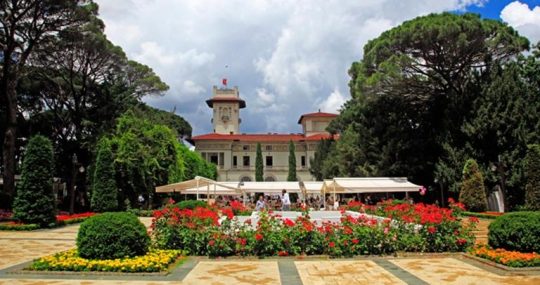
Palace Weddings on the Ottoman Dynasty
Shows and fireworks on the Golden Horn
That day the heart of Istanbul and of the empire was beating at this procession.
The participants wore their best outfits and carried their most valuable arms and pistols. Ahmet III was trying to show his power and wealth to his people with, this street parade instead of revealing his supremacy to the entire world in the battlefields. With the feasts and festivities he organized, with the mansions he had built during the Tulip Era and with all the luxury, he had changed the outlook of the capital city and ushered a new epoch in the Empire. The wedding day was a historic day for Istanbul. Everybody on the streets was happy. Joy was in the air. The streets were overcrowded. The windows were wide open. Faces beneath the veils were praying for the happiness of the bride and for the wealth, dashing look of the Sultan and his procession.
The procession was literally throwing money on the streets. People were stepping on each other to snap the coins. The procession arrived Eyiip, at the palace, prepared for Fatma Sultan. The procession participants disintegrated. Everyone had an entertainment to watch. Padishah and his wife went back to their palace. In the evening shows were staged on the Golden Horn, while fireworks were being lit on rafts.
Silahtar Ali Pasha dies in war
After this tiring and overwhelming wedding, which lasted for 25 days…
Silahtar Ali Pasha could not have Fatma Sultan. He had to send her back to the palace and wait for a while until she grows up and becomes a young lady. Silahtar Ali Pasha had to wait eight years for Fatma Sultan’s adolescence. He never had a chance to have a single private moment with her. Unfortunately, he died in Pclervaradin War before he could reunite with his fiancee, for whom he spent a fortune and organized feasts for weeks in order to gain supporters for his love. He became a martyr before he could realize his dreams.
Kosem Sultan marries her daughters
In the Ottoman Empire, the Sultans could marry before they were adolescents, but they could not share the same house with their spouses. This tradition was started by the well-known empress, Valide Kosem Sultan. For the sake of fortifying her position in the palace, Kosem Sultan married her minor daughters with the elite and reputable pashas of the time. Likewise, Ahmet 1 married her daughters Ayse Sultan and Fatma Sultan at the age of 13.
Sultan Ibrahim married Gevher Sultan at 3, Beyhan Sultan at 2. Emine, Ay§e and Safiye Sultans, the three daughters of Mustafa II, were married at 7. As mentioned above, Ahmet III had his daughters Fatma and Ummugulsum married at 5 and 2. Moreover, he married Atike Sultan at 12. Mustafa III married his son §ah Sultan at 3. This abnormality continued until the reign of MahmuL II, who pul an end to this situation and set the marriage time as the adolescence.
Multiple marriages
This weird tradition described above and the ongoing wars had a natural consequence. The sultans were widowed many times and were married more than once. The daughters of Ahmet I, Ayse, Fatma and Safiye, all married 6 times, which was a dynasty record. This record is followed by Safiye and Emine, daughters of Mustafa II, who married 4 times. So did Atike Sultan, daughter of Ahmet III.
Source: https://www.ensarislamoglu.com/palace-weddings-ottoman-dynasty/
0 notes
Text
Portrait of the daughters of Mehmed IV / IV. Mehmed lányainak portréja
IV. Mehmed szultánnak csupán három lánya érte meg biztosan a felnőttkort. Only three of Mehmed IV's daughters reached adulthood for sure.
Hatice Sultan
Hatice was Mehmed's eldest daughter, born in 1660 (or earlier). Her mother was probably Emetullah Rabia Gülnüş Sultan. Her wedding took place in 1675, after her father returned home from the Polish campaign and organized a huge series of ceremonies to crown the victory. It was then that the two brothers of Hatice, Mustafa (later Mustafa II) and Ahmed (later Ahmed III), were circumcised. Hatice Sultan’s husband was Musahip Sarıkçı Mustafa Pasha, with whom their first child, Sultanzade Mehmed Bey, was born the following year. Then in 1677 another son was born, Hasan Bey.
Hatice was widowed in October 1686, and from then on her sons were taken to the palace to be educated there. She lived as a widow for a time but was remarried in 1691. This time Moralı Hasan Pasha became her husband, who rose to the rank of Grand Vizier. After 1695, Hatice Sultan gave birth to a girl, Ayşe. We know this because it was recorded that after the birth, the Valide Sultan, Emetullah Rabia Gülnüş, visited her daughter in her palace. And Emetullah Rabia Gülnüş was a valide from 1695. The little girl probably died in 1717.
A high rank, an influental life was soon followed by a loss of grace, and Hatice's husband was exiled to Izmit in 1704. Hatice asked permission from the sultan to go with her husband, which she received, so she also traveled to Izmit. In 1707 the pasha was then pardoned, and was made the governor of Rakka. Hatice no longer followed the pasha there but returned to Istanbul. The pasha died in December 1713 and Hatice was widowed again. She never remarried.
Hatice spent her widowhood with collection porcelains and making parties. One of these parties happened during the disastrous revolt of 1730. We cannot rule out that she was also part of the rebellion. She was holding a banquet for the sultan and the grand vizier, along other high-ranking dignitaries, at her palace and it seems like she prevented the grand vizier from moving on to Istanbul that night in order to take immediate action against the rebels. We dont know if she did that because she secretly was a member of the opposition party, or she was just making a mistake? Anyhow, it led to her brother Ahmed Ill’s dethronement.
She lived a long life, seeing the reign of a total of six sultans: her father Mehmed IV; her uncles Suleiman II and Ahmed II; younger brothers Mustafa II and Ahmed III; but even her nephew's reign as she was alive during the reign of Mahmud I. She died on July 5, 1743, and was buried in the complex of her grandmother, Turhan Hatice.

Fatma Emetullah Sultan
Certainly she was born after 1675, because the ambassador report written in 1675 does not list her among Mehmed's children. Usually 1675 is given as her date of birth for this reason, but considering that she was married in 1695, it seems to be early in 1675, her date of birth may be closer to 1680. The identity of her mother is likely Emetullah Rabia Gülnüş, based on her name.
Her first husband was Tırnakçı Çerkez İbrahim Pasha, whom she married in September 1695. Their first child, Rukiye Hanimsultan was born in 1696. Rukiye Hanimsultan reached adulthood and died around 1720. About her daughters we know that: in 1708, Rukiye Hanimsultan married Sirke Osman Paşa (d. 1724), who had been called from Bosnia; after Rukiye Hanimsultan died, Sirke Osman Paşa married Emetullah Sultan, one of the daughters of Mustafa II.
Fatma Emetullah's first husband was executed in 1697, and then the widow sultana remarried in 1698. This time Topal Yusuf Pasha was the designated husband from whom a daughter was born in 1700, Safiye Hanimsultan, who died young, presumably in 1711. Fatma Emetullah is believed to have died in December 1700 of birth-complications due to the birth of Safiye Hanimsultan. Other sources suggests she died of plague, another suggests she died of tuberculosis. Her funeral procession started from her mansion in Bayezit, with the Chief of Black Eunuchs Nezir Agha and her husband Yusuf Pasha leading it, passed in front of the Alay köşkü, and terminated at the Valide Mosque, where she was laid to rest next to her father Mehmed IV.

Ümmügülsüm / Ümmi Sultan
She was born around 1680 but the identity of her mother is unknown. One of her first mentioning is from a harem register of 1691, when her uncle Suleiman II moved the harem to Edirne. She is the only niece to show up on the list, which raises interesting questions. Her sister, Fatma Emetullah, was also not yet married at the time, yet she is not mentioned in the list. This is because Fatma Emetullah certainly spent her time in the Old Palace next to her mother, Emetullah Rabia Gülnüş. The fact that Ümmügülsüm was not in the Old Palace may indicate that she may not have been the child of Emetullah Rabia Gülnüş Sultan or Afife Hatun living there. Her mother could have been someone else who might have already died, so the little princess could stay at Topkapi Palace.
Ümmügülsüm was very close to her uncle Ahmed II. She was the one who married her off in December 1693 to his close servant, Silahdar Çerkes Osman Pasha. They settled in a luxurious palace with the Pasha and had at least two children together. Their daughters were Hatice Hanimsultan and Fatma Hanimsultan, of whom Fatma probably reached adulthood and died around 1730. We know nothing more about the children of Ümmügülsüm. Ümmügülsüm and the pasha were very influential, living a magnificent life. In April 1694, for example, they held a huge party in their palace, for which the sultan, his Haseki - the last Haseki - Rabia, and several political leaders attended. Ümmügülsüm Sultan died before her fortieth birthday in 1720. Some say smallpox caused her death. She was buried in the mosque complex of Turhan Hatice.
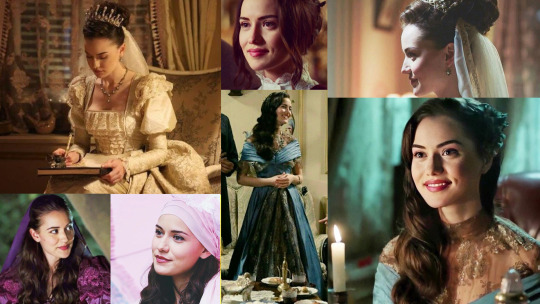
Beside these daughters, Mehmed IV's had other daughters as well. One of them is Ayşe, who was born around 1673/4, and died young. Her mother was certainly Emetullah Rabia Gülnüş, the Haseki Sultan of Mehmed. All we know is that the princess was promised to Kara Mustafa Pasha around 1675/6, but the wedding could never take place because the princess did not reach adulthood.
Two anonymous sultanas are also known, who are listed as daughters of Mehmed. All we know is one of them married Kasım Mustafa Pasha in 1687, who was Edirne's beylerbey. The other girl is said to have been the daughter of Gülbeyaz. Beside them, some also mention a girl named Gevher or Gevherhan, who may have been Mehmed IV’s sister rather than her daughter and they consider her as her daughter just because of a mistake.
Used sources: J. Dumas - Les perles de nacre du sultanat; N. Sakaoglu - Bu Mülkün Kadin Sultanlari; M. C. Uluçay - Padişahlarin Kadinlri ve Kizlari; A. D. Alderson - The Structure of the Ottoman Dynasty; L. Peirce - The Imperial Harem: Women and Sovereignty in the Ottoman Empire; C. Finkel - Osman's Dream: The Story of the Ottoman Empire; M. Özgüleş - The women who built the Ottoman Empire: Female Patronage and the Architectural Legacy of Gülnüş Sultan
* * *
Hatice Sultan
Hatice volt IV. Mehmed legidősebb lánya, 1660-ban (vagy korábban) született. Édesanyja valószínűleg a szultán Haszekije, Emetullah Rabia Gülnüş volt. Esküvőjére 1675-ben került sor, miután apja hazatért a lengyel hadjáratból és a győzelmet megkoronázván hatalmas ünnepségsorozatot rendezett. Ekkor került sor Hatice két öccsének, Musztafának (későbbi II. Musztafa) és Ahmednek (későbbi III. Ahmed) a körülmetélésére. Hatice Sultan férje Musahip Sarıkçı Mustafa Pasa lett, akivel a következő évben megszületett első közös gyermekük, Sultanzade Mehmed Bey. 1677-ben született még egy fiuk, Hasan Bey.
Hatice 1686 októberében megözvegyült, fiai innentől a palotába kerültek, hogy ott oktassák őket. Egy ideig özvegyen élte életét, de 1691-ben újraházasították. Ezúttal Moralı Hasan Pasa lett a férje, aki a nagyvezíri rangig emelkedett. 1695 után Hatice Sultan életet adott egy kislánynak, Ayşénak. Ezt onnan tudjuk, mert feljegyezték, hogy a szülés után a valide szultána, Emetullah Rabia Gülnüş meglátogatta lányát annak palotájában. A kislány valószínűleg 1717-ben hunyt el.
A magas rangot, befolyásos életet hamarosan kegyvesztettség követte és Hatice férjét 1704-ben Izmitbe száműzték. Hatice engedélyt kért a szultántól, hogy férjével tarthasson, melyet megkapott, így ő is Izmitbe utazott. 1707-ben aztán a pasának megbocstottak és Rakka kormányzójává tették meg. Hatice oda már nem követte a pasát, hanem visszatért Isztambulba. A pasa 1713 decemberében elhunyt, Hatice pedig megözvegyült. Hatice sosem házasodott újra.
Özvegységének éveit arra használta, hogy porcelánt gyűjtött, és ünnepélyes esteket szervezett. Az egyik ilyen este épp egybeesett az 1730-as lázadással. Egyesek szerint Hatice maga is felelős volt az eseményekért, ugyanis nem engedte a nagyvezírnek - aki jelen volt az estélyen -, hogy távozzon és a lázadással törődjön. Lehet, hogy Hatice ezt szánt szándékkal tette, mert a lázadókkal volt titkon, de az is lehet, hogy egyszerűen végzetes hibát vétett. Akárhogyan is, a lázadás során Hatice öccsét, III. Ahmedet trónfosztották.
Hosszú életet élt, összesen hat szultán uralkodását látta: apjáét IV. Mehmedét; nagybátyjaiét II. Szulejmánét és II. Ahmedét; öccseiét II. Musztafáét és III. Ahmedét; de még unokaöccse I. Mahmud uralkodása alatt is életben volt. 1743 július 5-én hunyt el és nagyanyja, Turhan Hatice komplexumában temették el.

Fatma Emetullah Sultan
Minden bizonnyal 1675 után született, mert az 1675-ben írt követi jelentés nem listázza IV. Mehmed gyermekei között. Általában 1675-t adják meg emiatt születési idejének, de figyelembe véve, hogy 1695-ben házasították ki, az 1675 korainak tűnik, inkább lehet születési ideje közelebb az 1680-hoz. Édesanyja kiléte neve alapján valószínűsíthető, így Emetullah Rabia Gülnüş szultána lányaként tekintenek Fatma Emetullahra.
Első férje Tırnakçı Çerkez İbrahim Pasa volt, akivel 1695 szeptemberében házasodtak össze. Egy gyermekük született, Rukiye Hanimsultan 1696-ban. Rukiye Hanimsultan megérte a felnőttkor és 1720 környékén hunyt el. Fatma Emetullah első férjét 1697-ben végezték ki, majd az özvegy szultána 1698-ban újra férjhez ment. Ezúttal Topal Yusuf Pasa volt a kijelölt férj, akitől 1700-ban egy lánya született, Safiye Hanimsultan, aki fiatalon elhunyt, vélhetően 1711-ben. Fatma Emetullah vélhetőleg A Safiye Hanimsultan születése során fellépő szülési komplikációk miatt halt meg 1700 decemberében.

Ümmügülsüm/Ümmi Sultan
1680 között született, édesanyja kiléte nem ismert. Egyik első említése egy 1691-ből származó háremjegyzék, mikor nagybátyja II. Szulejmán a háremet Edirnébe kölöztette. Ő az egyetlen unokahúg, aki a jegyzékben feltűnik, ami érdekes kérdéseket vet fel. Nővére, Fatma Emetullah ekkor szintén nem volt még kiházasítva, őt mégsem említi a jegyzék. Ennek oka, hogy Fatma Emetullah minden bizonnyal a Régi Palotában töltötte idejét édesanyja, Emetullah Rabia Gülnüş mellett. Az, hogy Ümmügülsüm nem a Régi Palotában volt arra utalhat, hogy talán nem az ott élő Emetullah Rabia Gülnüş Sultan vagy Afife Hatun gyermeke volt. Édesanyja valaki más lehetett, aki talán már elhalálozott, így a kishercegnő a Topkapi Palotában maradhatott.
Ümmügülsüm igen közel állt nagybátyjához II. Ahmedhez. Ő volt az, aki kiházasította szultánát 1693 decemberében Silahdar Çerkes Osman Pasához. A Pasával fényűző plotában telepedtek le és legalább két gyermekük született. Lányaik, Hatice Hanimsultan és Fatma Hanimsultan voltak, akik közül Fatma valószínűleg megérte a felnőttkort és 1730 körül hunyt el. Nem tudunk mást Ümmügülsüm gyermekeiről. Ümmügülsüm és a pasa igen befolyásosak voltak, pezsgő életet éltek. 1694 áprilisában például hatalmas ünnepélyt rendeztek palotájukban, melyre hivatalos volt a szultán, annak haszekije - az utolsó Haszeki - Rabia és több politikai vezető is. Ümmügülsüm Sultan negyvenedik születésnapja előtt hunyt el, 1720-ban. Egyesek szerint himlő okozta a halálát. Turhan Hatice mecsetkomplexumában temették el.

Mehmednek a fentebb leírt lányok mellett voltak további lányai is. Egyikük, egy Ayşe nevű kislány volt, aki 1673/4 környékén született és korán meghalt. Édesanyja minden bizonnyal Emetullah, Rabia Gülnüş, a szultán Haszekije volt. Annyit tudunk, hogy a hercegnőt 1675/6 környékén odaígérték Kara Mustafa Pasához, ám az esküvő sosem jöhetett létre, mert a hercegnő nem érte meg a felnőtt kort.
Két névtelen szultána is ismert, akiket Mehmed lányaiként jegyeznek. Egyikükről annyit tudunk, hogy Kasım Mustafa Pasához ment nőül 1687-ben, aki Edirne helytartója volt. A másik lány a legendák szerint Gülbeyaz lánya volt. Mellettük néhányan egy Gevher vagy Gevherhan nevű lányt is szoktak említeni, aki lehet, hogy inkább volt Mehmed testvére, mint lánya és csupán keveredés miatt tekintik néhányan az ő lányaként.
Felhasznált források: J. Dumas - Les perles de nacre du sultanat; N. Sakaoglu - Bu Mülkün Kadin Sultanlari; M. C. Uluçay - Padişahlarin Kadinlri ve Kizlari; A. D. Alderson - The Structure of the Ottoman Dynasty; L. Peirce - The Imperial Harem: Women and Sovereignty in the Ottoman Empire; C. Finkel - Osman's Dream: The Story of the Ottoman Empire; M. Özgüleş - The women who built the Ottoman Empire: Female Patronage and the Architectural Legacy of Gülnüş Sultan
#ümmi#ümmügülsüm#fatma#fatma emetullah#gevher#gevherhan#Mehmed IV#turhan hatice#Emetullah Rabia Gülnüş#emetullah rabia#emetullah#rabia gülnüş#Hatice
24 notes
·
View notes
Quote
In the sixteenth and seventeenth centuries Ottoman sultans did not usually contract legal marriages. Their women were all slaves. No legal barriers against sultanic marriage existed, but custom was against it and in the Ottoman world custom had often the force of law. Süleyman the Magnificent dared to break this tradition by marrying Hürrem, his favourite concubine, with a great ceremony and lavish festivities even if Ottoman sources do not mention the fact. His heirs had not his courage in putting aside custom and, if they got married, they made it quietly, behind the protective walls of the Imperial Palace. Even the memory of these marriages is almost lost. According to the report of the envoy Jacopo Ragazzoni, Süleyman’s son, Selim II, married his haseki, Nur Banu. The report was presented to the Senate on 16 August 1571 and Ragazzoni says that the marriage had been celebrated six months before. The same information is given by Giovanni Correr in 1578 and Giacomo Soranzo in 1584. They also add that for this reason Nur Banu could sit and eat in the presence of the sultan, while Safiye could not. We know that Osman II also contracted a legal marriage with Akile, the daughter of the müfti Esad efendi, and the mad İbrahim married his concubine Hümaşah, known as Telli Haseki, in an elaborate ceremony of state. An Ottoman historian, namely Mustafa Ali, refers to Safiye as the sultan’s wedded wife. But since foreign sources maintained that Murad III did not marry his haseki, nobody has believed him. In 1585 the baylo Giovanni Francesco Morosini reports that the sultan never made “chebin” for her. This word is the ambassador’s rendering of the popular Turkish kābin, namely the settlement made by a Muslim husband to his wife at the time of their marriage. But Giovanni Francesco Morosini left Istanbul in June 1585 and people began to talk about Safiye’s marriage only after this date. In October of the same year the baylo Lorenzo Bernardo was informed by Esther kira that the marriage between the sultan’s daughter Ayşe and İbrahim paşa was about to take place, and that the sultana wanted to get married at the same time. İbrahim paşa had been betrothed to the sultan’s daughter since 1582, but Nur Banu was against this marriage; as damad she wanted her adoptive son, the kapıcıbaşı Mahmud, who when still a child had been given to her by Selim II. For this reason İbrahim paşa was appointed beylerbeyi of Egypt. After Nur Banu’s death, in December 1584, Mahmud married the rich daughter of Ahmed paşa, sister of Çiğala-zâde Sinan’s wife; in this way he gave up every hope to marry Ayşe, since in order to marry a sultana a man had to repudiate his other wives. On 11 December both marriages were projected for the feast of Nevruz, at the beginning of spring. On receiving the news the baylo immediately sent a letter to Venice, and some chairs to the sultan and the sultana. Some years before, in 1582, other chairs had been sent to Sokollu Mehmed paşa for his marriage with İsmihan: in fact Venetians used to present pieces of forniture to members of the Ottoman imperial family for their weddings. On 24 December Safiye replied, thanking for the gift and “for the happiness that the lords of Venice will feel for what had been determined”. The Venetian Senate immediately sent her a letter of congratulations upon the occasion of her marriage. At the beginning of April the sultana thanked the baylo for his lords’ letter which she had just received and, by means of Esther kira, asked him for perfumes and odoriferous oils for her wedding, while her daughter’s one was postponed till the end of May.
Taken from: Maria Mia Pedani, Safiye’s Household and Venetian Diplomacy
#safiye sultan#nurbanu sultan#ottoman history#history#historicalquotes#quote#some quote since I've always reiceived many asks about legal marriages of ottoman sultans to their slave concubines#as I said before safiye/murad marriage is not 100% confirmed though
39 notes
·
View notes